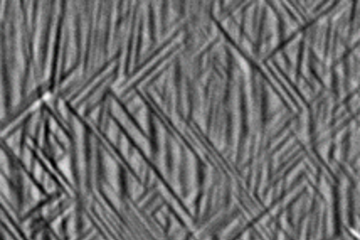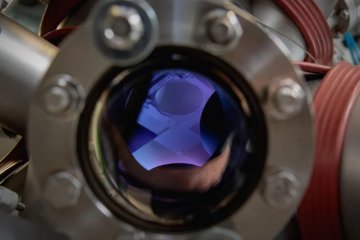All genres
61.
Talk
In-situ analysis of deformation and recrystallization mechanisms in magnesium alloys. International Symposium on Plasticity 2013, Nassau, Bahamas (2013)
62.
Talk
Forget Spider Silk: Bulk Nanostructuring of 1 Billion Tons of Steel. Gordon Research Conference on Physical Metallurgy: Materials at Extremes, University of New England Biddeford, New England Biddeford, ME, USA (2013)
63.
Talk
Electron channelling contrast imaging under controlled diffraction conditions: A powerful technique for quantitative microstructural characterization of deformed materials. International Symposium on Plastic Deformation and Texture Analysis, Alcoy, Spain (2012)
64.
Talk
Multi-scale investigation of strain-hardening mechanisms in high-Mn steels from the mesoscale to the atomic scale. Lecture at Materials Department, Oxford University, Oxford, UK (2012)
65.
Talk
In-situ analysis of the tensile deformation mechanisms in rolled AZ31. TMS 2012 Annual Meeting, Orlando, FL, USA (2012)
66.
Talk
Evaluation of twin boundary interfaces to strain hardening by electron channeling contrast imaging. TMS 2012 Annual Meeting, Orlando, FL, USA (2012)
67.
Talk
The art of experimentation in micromechanics: Lattice defects in steels. GAMM Conference, Darmstadt, Germany (2012)
68.
Talk
Electron channeling contrast imaging: A powerful technique for quantitative microstructural characterization of deformed materials in the SEM. Seminar at Bundesanstalt fuer Materialforschung-pruefung (BAM), Berlin, Germany (2012)
69.
Talk
New insights on quantitative microstructure characterization by electron channeling contrast imaging under controlled diffraction conditions in the SEM. Microscopy & Microanalysis, Phoenix, AZ, USA (2012)
70.
Talk
Study of deformation twinning and planar slip in a TWIP steel by Electron Channelling Contrast Imaging in a SEM. International Conference on the Textures of Materials, ICOTOM 16, Bombay, India (2011)
71.
Talk
In-situ analysis of deformation and recrystallization mechanisms. European Congress on Advanced Materials and Processes, EUROMAT 2011, Montpellier, France (2011)
72.
Talk
Dislocation imaging by electron channeling contrast under controlled diffraction conditions in the SEM. Microscopy Conference MC 2011, Kiel, Germany (2011)
73.
Talk
Understanding TWIP steel microstructures by using advanced electron microscopy and ab initio predictions. International Conference on Processing & Manufacturing of Advanced Materials THERMEC 2011, Québec City, QC, Canada (2011)
74.
Talk
The influence of planar slip and deformation twinning on mechanical behavior in TWIP steels. International Conference on Processing & Manufacturing of Advanced Materials THERMEC 2011, Québec City, QC, Canada (2011)
75.
Talk
Effect of strain path and texture on microstructure in Fe–22 wt.% Mn–0.6 wt.% C TWIP steel. 1st International Conference on High Manganese Steels 2011, Seoul, South Korea (2011)
76.
Talk
Effect of grain size and heterogeneous strain distribution on deformation twinning in a Fe–22Mn–0.6C TWIP steel. THERMEC 2009, Berlin, Germany (2009)
77.
Talk
Quantitative electron channelling contrast imaging: A promising tool for the study of dislocation structures in SEM. Electron Backscatter Diffraction Meeting, Swansea, UK (2009)
78.
Thesis - Master
Nanostructured High-Mn Steels by High Pressure Torsion: Microstructure-Mechanical Property Relations. Master, Materials Chemistry, Lehrstuhl für Werkstoffchemie, RWTH Aachen, Aachen, Germany (2014)











